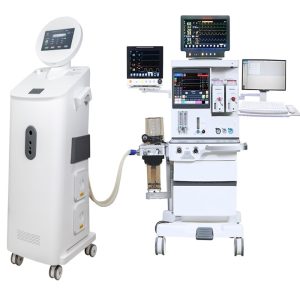In the healthcare industry, maintaining a clean and sterile environment is crucial to ensure the safety and well-being of patients and healthcare professionals. Various disinfection methods are employed in medical institutions to control the spread of infections and diseases. In this article, we will explore some commonly used disinfection methods, discuss their drawbacks, and introduce an efficient solution - the Anesthesia Breathing Circuit Disinfection Machine.
1. Chemical Disinfectants
Chemical disinfectants are widely used in medical settings due to their effectiveness against a broad spectrum of microorganisms. Common chemical disinfectants include alcohol-based solutions, chlorine compounds, and hydrogen peroxide. While these disinfectants can be highly effective, they may have some drawbacks, such as potential damage to certain materials and the need for appropriate contact time to ensure proper disinfection.

2. UV-C Disinfection
UV-C disinfection is a non-chemical method that uses ultraviolet light to destroy the DNA of microorganisms, rendering them unable to replicate and cause infections. UV-C disinfection is effective against bacteria, viruses, and fungi. However, it requires direct exposure to the UV-C light, and shadows or obstructed areas may not receive adequate disinfection.

3. Steam Sterilization
Steam sterilization, also known as autoclaving, is commonly used for heat-resistant medical equipment. The process involves exposing the items to high-pressure saturated steam, which kills all microorganisms. While steam sterilization is effective, it may not be suitable for heat-sensitive items and can be time-consuming.
4. Anesthesia Breathing Circuit Disinfection Machine
The Anesthesia Breathing Circuit Disinfection Machine offers a revolutionary solution to improve the efficiency and ease of disinfection in medical institutions. This innovative device eliminates the need for cumbersome dismantling of the anesthesia breathing circuits for manual cleaning.

Advantages of the Anesthesia Breathing Circuit Disinfection Machine
Efficiency: The one-touch disinfection process significantly reduces the time required for cleaning the anesthesia breathing circuits, thereby increasing the efficiency of medical procedures.
Simplicity: The device is designed to be user-friendly, requiring minimal training for healthcare professionals to operate effectively.
Cost-effective: By automating the disinfection process, the machine helps reduce the need for excessive chemical disinfectants and manual labor, leading to cost savings in the long run.
Consistency: The automated disinfection process ensures consistent and standardized disinfection outcomes, minimizing the risk of cross-contamination.
Conclusion
Maintaining a high level of hygiene and disinfection in medical institutions is paramount to safeguarding patient health and preventing the spread of infections. While chemical disinfectants, UV-C disinfection, and steam sterilization are commonly used methods, the Anesthesia Breathing Circuit Disinfection Machine offers a modern and efficient solution. By incorporating this advanced technology, medical institutions can enhance their infection control measures, reduce operational costs, and improve overall patient safety.